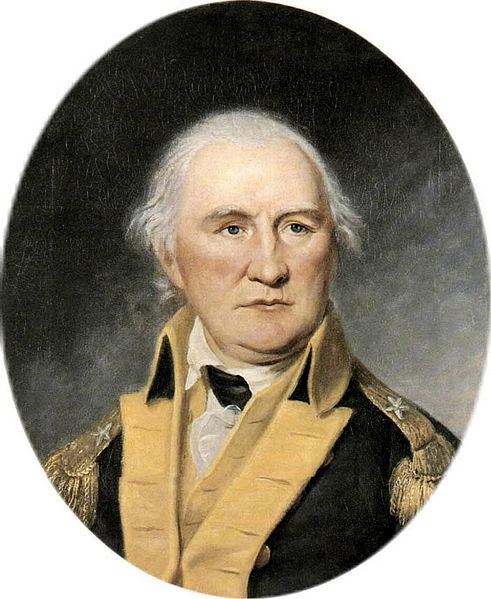Maryland and Virginia Rifle Regiment
The Maryland and Virginia Rifle Regiment, most commonly known as Rawlings' Regiment in period documents, was organized in June 1776 as a specialized light infantry unit of riflemen in the Continental Army during the American Revolutionary War. The American rifle units complemented the predominant, musket-equipped, line infantry forces of the war with their long-range marksmanship capability and were typically deployed with the line infantry as forward skirmishers and flanking elements. Scouting, escort, and outpost duties were also routine. The rifle units' battle formation was not nearly as structured as that of the line infantry units, which employed short-range massed firing in ordered linear formations. The riflemen could therefore respond with more adaptability to changing battle conditions.
Continental Army riflemen skirmishing with enemy troops at the Battle of Saratoga. Painting by H. Charles McBarron Jr.
Otho Holland Williams by Charles Willson Peale. Williams was initially first lieutenant and later captain of Capt. Thomas Price's Independent Rifle Company in 1775 and early 1776
View of the attack against Fort Washington (center background). New Jersey Palisades and Hudson River are in right background, and Harlem River is in foreground. View is toward the southwest. Contemporaneous watercolor by Thomas Davies
Daniel Morgan by Charles Willson Peale
Battle of Fort Washington
The Battle of Fort Washington was fought in New York on November 16, 1776, during the American Revolutionary War between the United States and Great Britain. It was a British victory that gained the surrender of the remnant of the garrison of Fort Washington near the north end of Manhattan. It was one of the worst Patriot defeats of the war.
A view of the attack against Fort Washington, a portrait by Thomas Davies
British warships trying to pass between Forts Washington and Lee
Bennett Park memorial at Fort Washington
A Daughters of the American Revolution monument to the final position of the Continental troops before crossing the Hudson River








